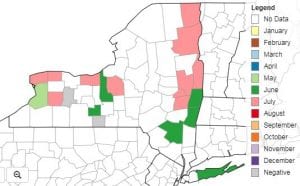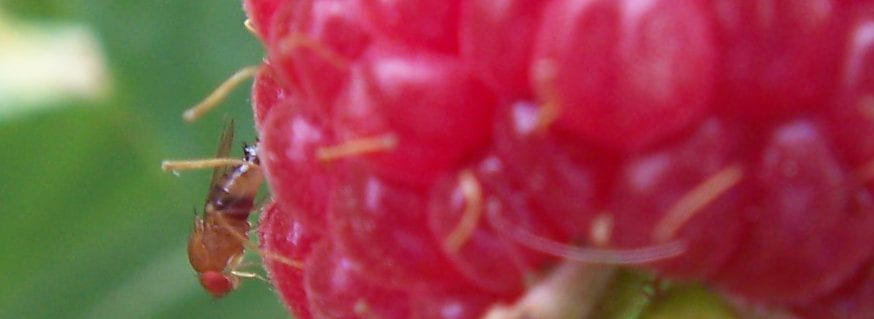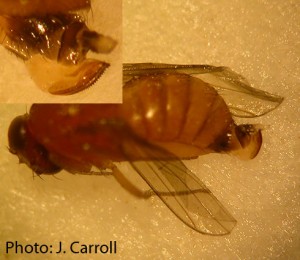SWD were caught in a raspberry planting in Wayne County and in two blueberry plantings, one each in Wayne and Onondaga Counties during the week ending July 10, 2018. Fruit is ripe and harvests are underway at these farms. These traps are being monitored by Ryan Parker and Nicole Mattoon, working with Juliet Carroll, NYS IPM Program.

In Wayne County:
- In raspberry — 2 females were caught in a trap on the edge of the planting. The other three traps caught zero SWD.
- In blueberry — 2 males and 1 female were caught, one male in a trap on the crop edge. The two other SWD were in the two traps set within the crop.
In Onondaga County:
- In blueberry — 1 male was caught in one of the traps set on the edge of the planting. The other three traps caught zero SWD.
Spread the word to fellow farmers, extension colleagues, and home gardeners. Sanitation, clean picking, mowing, weed management, judicious irrigation without leakage, planning for improved canopy management via pruning next year, insecticide protection at 7-day intervals with rotation to different modes of action (IRAC group number), reapply after rain — these are some management tactics to put into place at this time.
- SWD monitoring, fruit.cornell.edu/spottedwing/monitoring/ - describes what you can do.
- SWD management, fruit.cornell.edu/spottedwing/management/ - describes what you should do.
- SWD distribution, fruit.cornell.edu/spottedwing/distribution/ - describes where the CCE network is finding it.








